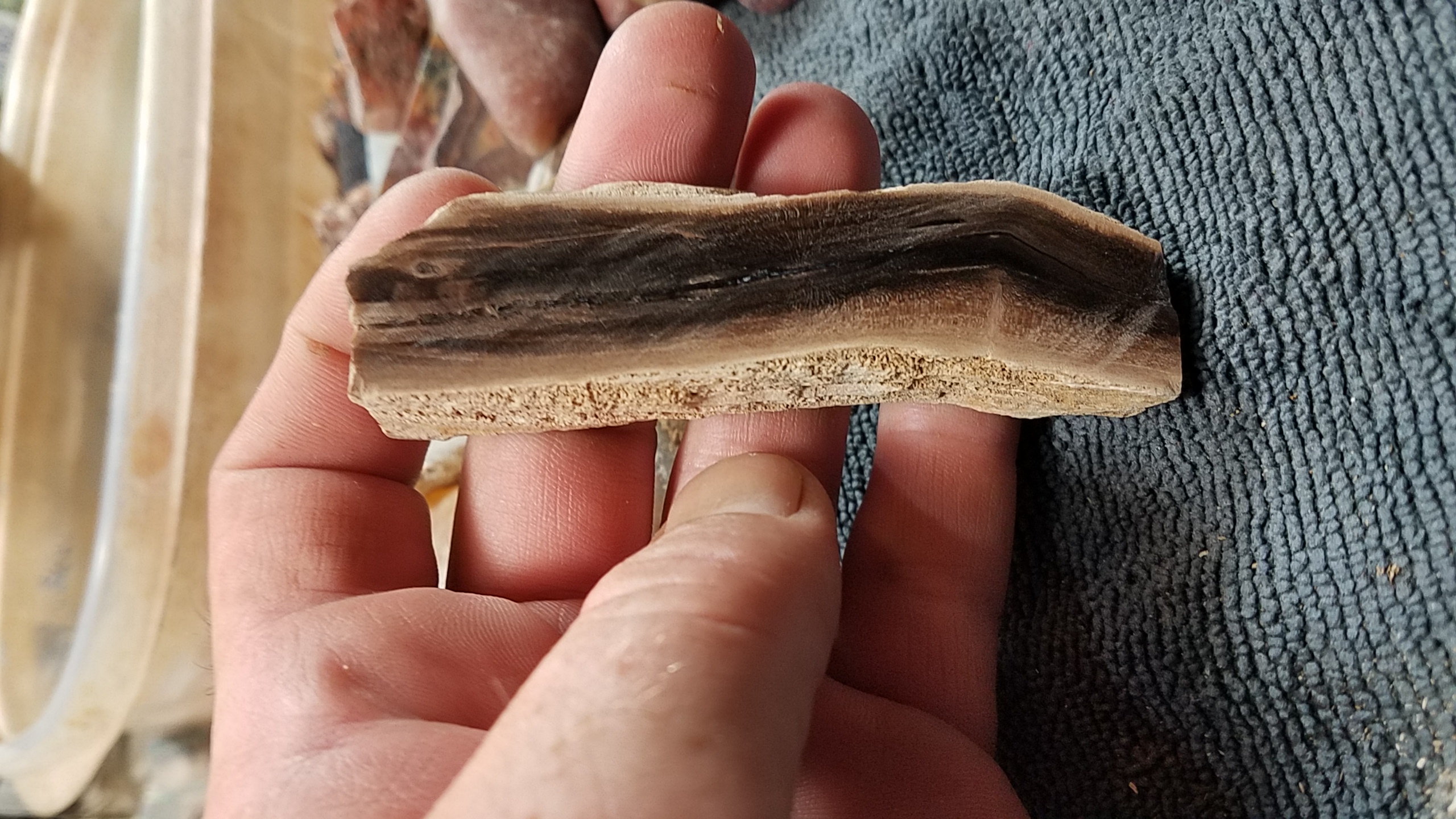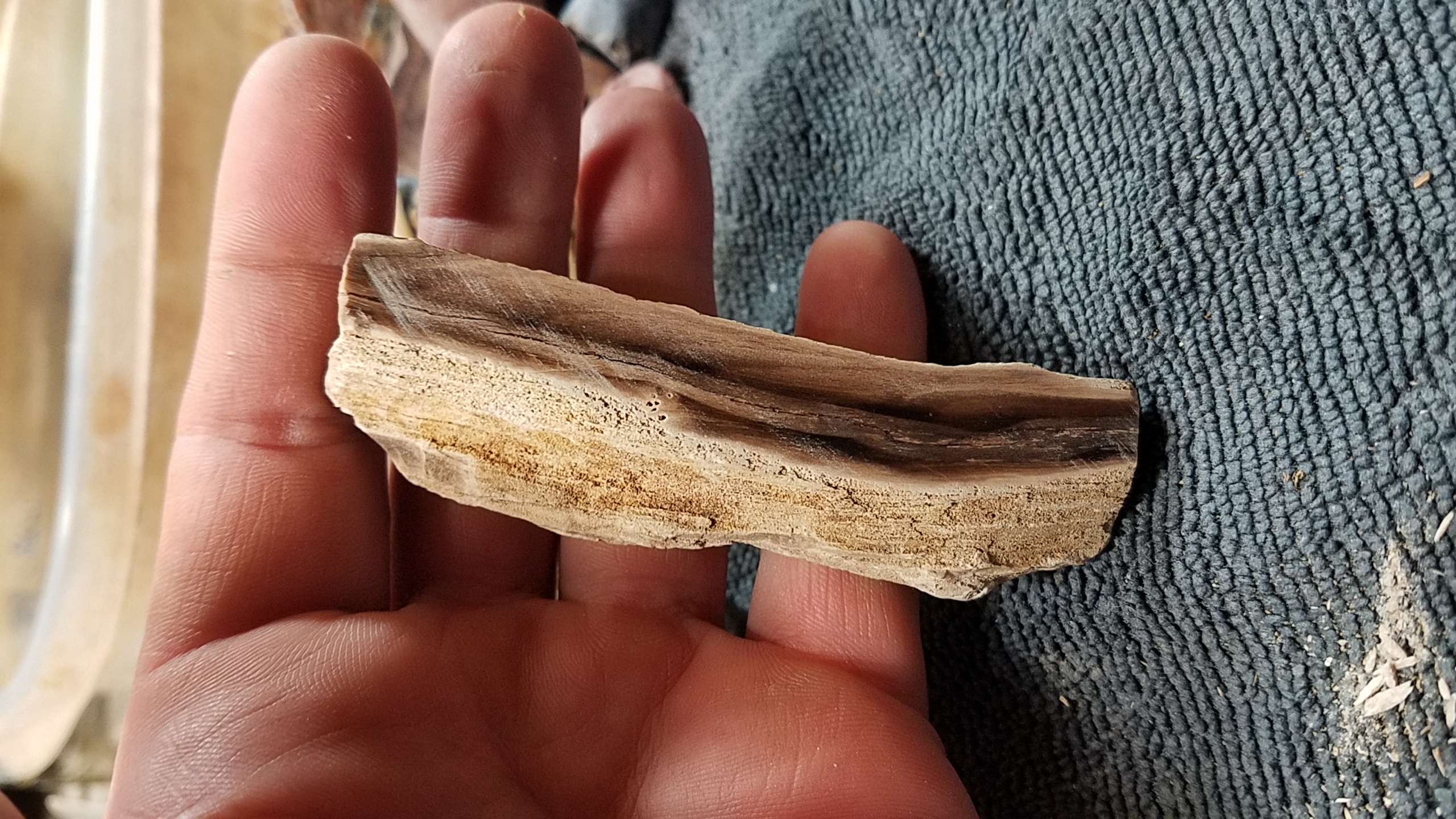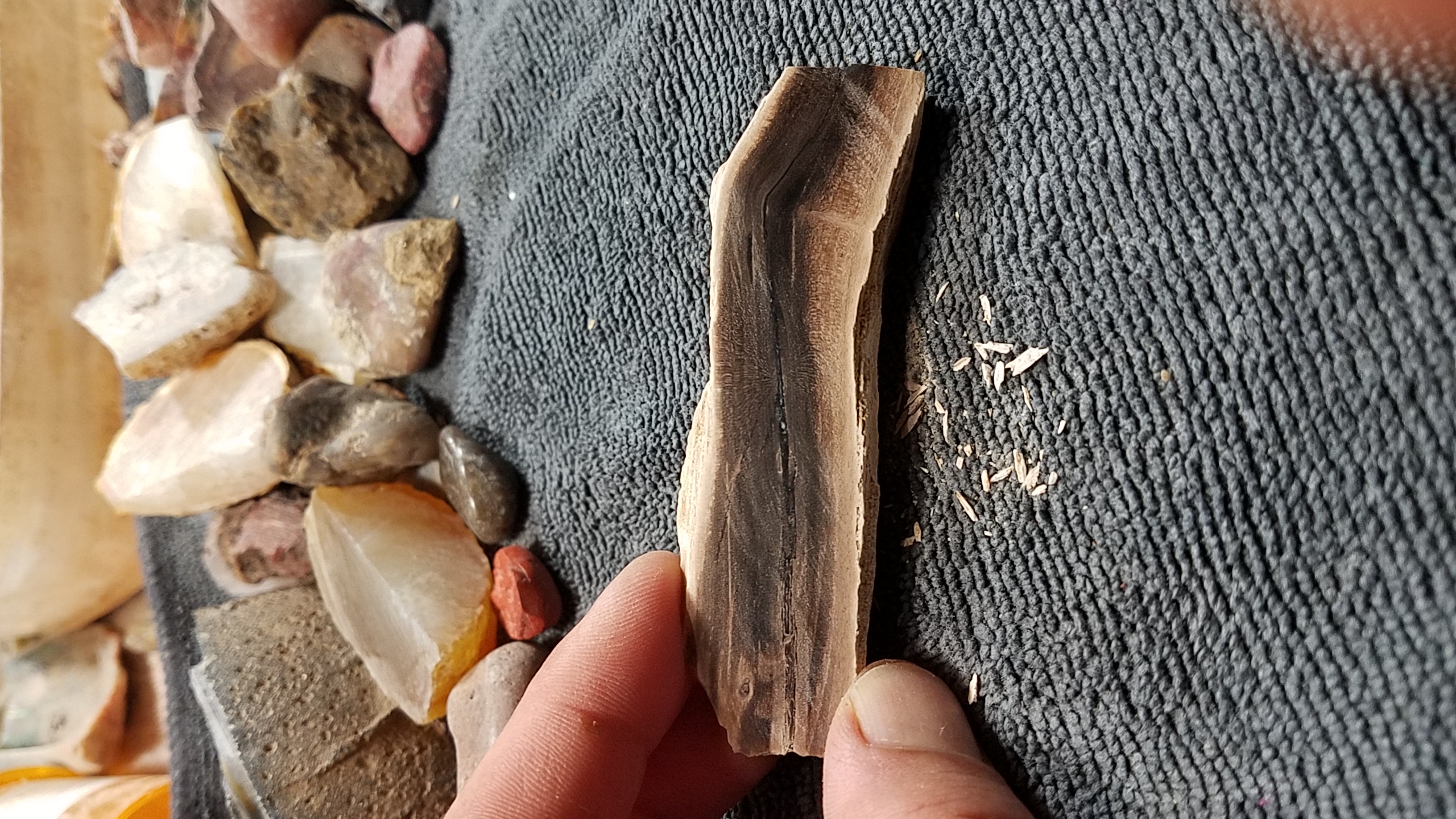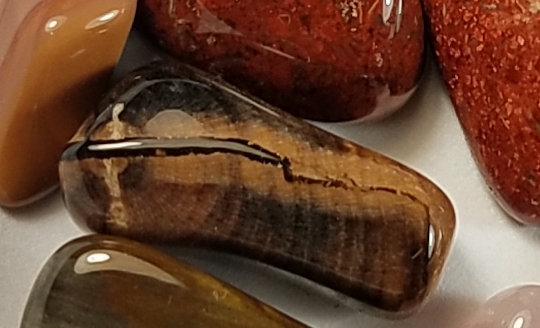oldschoolrocker
fully equipped rock polisher
  
Member since January 2019
Posts: 1,578
|
Post by oldschoolrocker on Aug 28, 2019 18:30:22 GMT -5
|
|
Deleted
Deleted Member
Member since January 1970
Posts: 0
|
Post by Deleted on Aug 28, 2019 20:13:25 GMT -5
Certainly looks like petrified wood to me. Not all petrified wood is very hard - some is not completely mineralized, and some can be replaced by minerals other than agate or jasper (e.g., calcite).
I think most are familiar with permineralized wood that is heavily replaced by hard chalcedony, because that is the type that best survives tumbling in streams or weathering for very long. Some, though, is very soft and/or brittle indeed.
|
|
oldschoolrocker
fully equipped rock polisher
  
Member since January 2019
Posts: 1,578
|
Post by oldschoolrocker on Aug 28, 2019 20:28:32 GMT -5
Certainly looks like petrified wood to me. Not all petrified wood is very hard - some is not completely mineralized, and some can be replaced by minerals other than agate or jasper (e.g., calcite). I think most are familiar with permineralized wood that is heavily replaced by hard chalcedony, because that is the type that best survives tumbling in streams or weathering for very long. Some, though, is very soft and/or brittle indeed. Thanks for the info! I figured not all would come in with hardness of 6-7 but being new to all this I wasnt sure. Thanks again for taking the time to reply! |
|
|
|
Post by Peruano on Aug 28, 2019 20:41:19 GMT -5
The material is quite similar to the what I call opalized wood. It is not silicated and the opal bands can be variable in thickness. The material often is quite flakey on the outer layers, it can be heavily fractured (in NM because of freezing and thawing), but can be quite solid internally. The part that is most likely to be opal is black, and when worked up quite shiney. Often it follows a crack, or a growth band in the wood. You did a great job on shining it up. I have seen wood like this from New Mexico, Arizona, and Nevada, but it probably occurs in lots of areas. Its a challenge to work with, because its soft and fractures, but it is truly unique when you are successful. Here's a link to some that I cut up recently. forum.rocktumblinghobby.com/thread/88180/backing-opalized-wood-fossil-record?page=1&scrollTo=1060580 |
|
oldschoolrocker
fully equipped rock polisher
  
Member since January 2019
Posts: 1,578
|
Post by oldschoolrocker on Aug 29, 2019 14:54:46 GMT -5
The material is quite similar to the what I call opalized wood. It is not silicated and the opal bands can be variable in thickness. The material often is quite flakey on the outer layers, it can be heavily fractured (in NM because of freezing and thawing), but can be quite solid internally. The part that is most likely to be opal is black, and when worked up quite shiney. Often it follows a crack, or a growth band in the wood. You did a great job on shining it up. I have seen wood like this from New Mexico, Arizona, and Nevada, but it probably occurs in lots of areas. Its a challenge to work with, because its soft and fractures, but it is truly unique when you are successful. Here's a link to some that I cut up recently. forum.rocktumblinghobby.com/thread/88180/backing-opalized-wood-fossil-record?page=1&scrollTo=1060580That does sound pretty spot on with what I've got. Was pleasantly surprised with how quickly it tumbled and decently it polished. Hopefully the rest of the piece does the same. Thanks for the info! |
|
|
|
Post by Peruano on Aug 29, 2019 16:16:07 GMT -5
I've never had the courage to tumble it. Sometimes it takes awhile to polish through the chalky exterior but there are black and grey solid areas that take a good polish. On a cab main I can't push to aggressively oi it will pop concentric ( conchoidal) chips. Yours may be solder than most of what I have.
|
|










